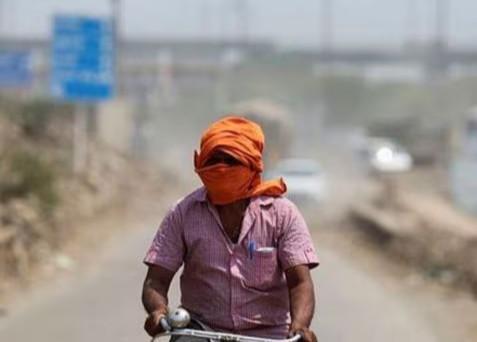
Extreme Heat Endangering Health & Productivity of Workers: Report
As the world grapples with the challenges of climate change, a recent report by the World Health Organisation (WHO) and World Meteorological Organisation (WMO) has highlighted a pressing concern that affects not only our health but also our productivity at work. The report reveals that extreme heat is posing a significant threat to the well-being and productivity of workers across the globe.
According to the report, worker productivity drops by 2-3% for every degree above 20°C. This may seem like a small figure, but when you consider the widespread impact of heatwaves on various industries, it becomes a significant concern. The report also emphasizes that manual workers in agriculture, construction sectors, and vulnerable populations like children and the elderly in developing countries are particularly at risk.
The health risks associated with extreme heat are numerous and can be severe. Heatstroke, dehydration, and kidney dysfunction are just a few of the potential consequences of prolonged exposure to high temperatures. These conditions can lead to long-term health problems and even death, especially in vulnerable populations.
The report highlights the need for employers and governments to take immediate action to protect workers from the dangers of extreme heat. This can be achieved through the implementation of heat-related policies and procedures, provision of heat-stress training, and ensuring that workers have access to cooling facilities and breaks.
One of the most affected sectors is the agriculture industry. Farmers and farm workers are often exposed to extreme heat and humidity, which can lead to heat-related illnesses and reduced productivity. A study by the WHO found that heat-related illnesses among farmers can result in significant economic losses, particularly in developing countries.
The construction sector is another industry that is highly vulnerable to heat-related problems. Construction workers are often exposed to extreme temperatures and humidity, which can lead to heat exhaustion and dehydration. According to the WMO, heat-related illnesses among construction workers can result in increased absenteeism, reduced productivity, and even fatalities.
In addition to the agriculture and construction sectors, vulnerable populations like children and the elderly are also at risk. In developing countries, these populations often lack access to cooling facilities, air conditioning, and other heat-mitigation measures. As a result, they are more susceptible to heat-related illnesses and death.
The report emphasizes the need for governments and employers to take proactive measures to protect workers from the dangers of extreme heat. This includes implementing heat-related policies and procedures, providing heat-stress training, and ensuring that workers have access to cooling facilities and breaks.
In conclusion, the report by the WHO and WMO highlights the urgent need for action to protect workers from the dangers of extreme heat. The health risks associated with extreme heat are numerous and can be severe, and the economic consequences of heat-related illnesses can be significant. It is essential that governments and employers take immediate action to protect workers and ensure that they are equipped to work safely and productively in extreme heat conditions.
Source: https://repository.inshorts.com/articles/en/PTI/45d9bd2d-ff57-417c-9e5f-831344bb34b0






